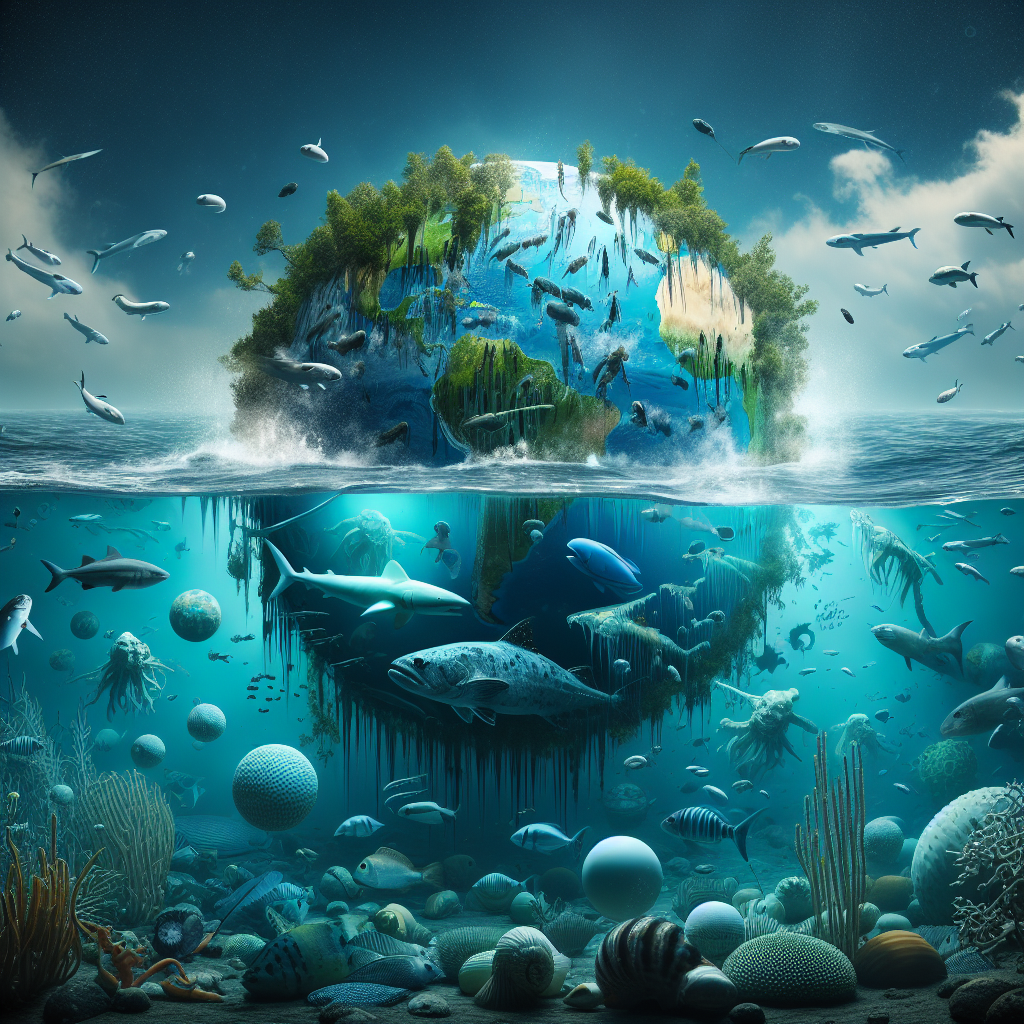-
Table of Contents
Introduction

Indonesia, with its vast archipelago and rich marine biodiversity, is highly vulnerable to the impacts of climate change on its marine ecosystems. The warming of the Earth’s atmosphere and oceans, caused by human activities such as burning fossil fuels and deforestation, has led to a range of negative consequences for marine life in Indonesian waters. This article explores the various impacts of climate change on marine life in Indonesia and highlights the urgent need for action to mitigate these effects.
Rising Sea Temperatures
One of the most significant impacts of climate change on marine life in Indonesia is the rising sea temperatures. As greenhouse gases trap heat in the atmosphere, the oceans absorb a large portion of this excess heat. This increase in temperature has severe consequences for marine ecosystems, including coral bleaching events.
Coral Bleaching
Coral reefs are among the most diverse and productive ecosystems on the planet, providing habitat for countless marine species. However, rising sea temperatures stress the coral, leading to a phenomenon known as coral bleaching. When corals are exposed to prolonged periods of high temperatures, they expel the symbiotic algae living within their tissues, causing them to turn white or pale. This bleaching weakens the corals and makes them more susceptible to disease, ultimately leading to their death.
In Indonesia, home to the world’s most extensive coral reef system, the Coral Triangle, coral bleaching events have become increasingly frequent and severe. The loss of coral reefs not only affects the biodiversity of marine life but also has significant economic implications for coastal communities that rely on tourism and fisheries.
Ocean Acidification
Another consequence of climate change on marine life in Indonesia is ocean acidification. As the concentration of carbon dioxide (CO2) in the atmosphere increases, a significant portion of it is absorbed by the oceans. This absorption leads to a chemical reaction that lowers the pH of seawater, making it more acidic.
Impact on Marine Organisms
Ocean acidification poses a significant threat to marine organisms with calcium carbonate shells or skeletons, such as corals, mollusks, and some plankton species. The increased acidity of seawater makes it more difficult for these organisms to build and maintain their protective structures. This can have cascading effects throughout the food chain, as many other species rely on these organisms for food and habitat.
In Indonesia, the acidification of seawater puts the unique marine biodiversity at risk. The country is home to numerous coral species, mollusks, and other marine organisms that are highly vulnerable to the changing pH levels. The loss of these species would not only disrupt the delicate balance of marine ecosystems but also impact the livelihoods of millions of people who depend on fisheries and tourism.
Sea Level Rise
Climate change also contributes to rising sea levels, which pose a significant threat to coastal areas in Indonesia. As global temperatures increase, glaciers and ice caps melt, and thermal expansion causes seawater to expand. These factors combined lead to a rise in sea levels, which can have devastating consequences for coastal communities and their marine ecosystems.
Coastal Erosion and Habitat Loss
The rising sea levels in Indonesia result in coastal erosion, which leads to the loss of vital habitats for marine life. Mangrove forests, seagrass beds, and coral reefs are all essential ecosystems that provide shelter, breeding grounds, and food sources for numerous species. However, as the sea encroaches further inland, these habitats are destroyed, leaving marine life without suitable environments to thrive.
Coastal communities in Indonesia heavily rely on these ecosystems for their livelihoods, including fishing and aquaculture. The loss of these habitats not only disrupts the delicate balance of marine ecosystems but also threatens the socio-economic well-being of coastal communities.
Conclusion
The impacts of climate change on marine life in Indonesia are undeniable and require urgent attention. Rising sea temperatures, coral bleaching, ocean acidification, and sea-level rise all pose significant threats to the rich marine biodiversity and the livelihoods of coastal communities.
To mitigate these impacts, it is crucial for Indonesia to take immediate action. This includes reducing greenhouse gas emissions, promoting sustainable fishing practices, protecting and restoring critical marine habitats, and raising awareness about the importance of marine conservation.
By addressing the root causes of climate change and implementing effective adaptation and mitigation strategies, Indonesia can protect its marine ecosystems and ensure the long-term sustainability of its marine resources. The time to act is now, as the future of Indonesia’s marine life and the well-being of its coastal communities depend on it.
